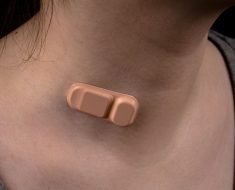Japanese physicians highlight the risks and clinical significance for individuals who remain seated and immobile in vehicles for prolonged periods. They call for preventive awareness activities and education about the risk of venous thromboembolisms (VTE) in a Letter to the Editor in the Canadian Journal of Cardiology.
Earlier reports have identified a sharp increase in sudden cardiac death following natural disasters like earthquakes, but less is known about the risk of other secondary health damage such as acute cerebral and cardiovascular diseases, and in particular, the risk of VTE as a result of being confined in a car for a long time.
Following the Kumamoto earthquake in April 2016, there was a high number of night aftershocks. Because many people were afraid to return to their homes, they chose to evacuate. Although some individuals reached a public evacuation shelter, many others were forced to stay in their vehicles overnight.
In order to assess the impact of remaining seated in cars for extended periods of time, the Kumamoto Earthquake Thrombosis and Embolism Protection (KEEP) project investigators gathered data from the aftermath of the Kumamoto earthquakes. They found an “epidemic” of blood clots developing in the legs, and in numerous cases going to the lungs, in many of the people forced to evacuate. Analysis of questionnaires from 21 local medical institutions established that 51 patients were hospitalized following the earthquakes due to VTE. Of these, 42 patients (82.4 percent) had spent the night in a vehicle. VTE was complicated by pulmonary thromboembolism (PTE) in 35 cases.
“Preventive awareness activities by professional medical teams, supported by education in the media about the risk of VTEs after spending the night in a vehicle, and raising awareness of evacuation centers, could lead to a reduced number of victims of VTE,” noted lead investigator Seiji Hokimoto, MD, PhD, from the Department of Cardiovascular Medicine, Graduate School of Medical Sciences, Kumamoto University, Kumamoto, Japan.
Source: Read Full Article





